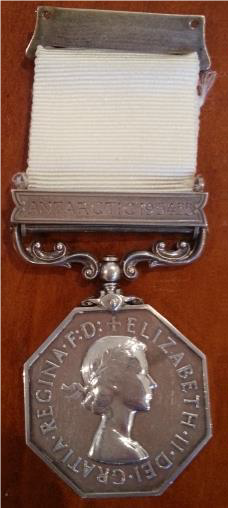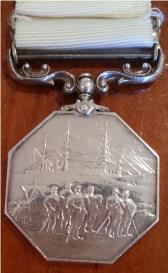The Polar Medal was instituted in 1904 by in the UK by King Edward VII to recognize distinguished service in the Arctic and Antarctic.
The Polar Medal is awarded only for ‘extreme human endeavour against the appalling weather and conditions that exist in the Arctic and Antarctic.’
The Polar Medal was awarded to the early ANARE wintering expeditioners from the establishment of Mawson Station in 1954 and Davis Station in 1957 through to 1958. The rugged conditions of those early expeditioners warranted this award.
Further to 1958 it was not until 1969 that the Polar Medal was awarded to 58 ANARE expeditioners for distinguished service during the years 1959 to 1967.
The medal is a silver octagon suspended from a plain white moiré ribbon. The obverse is the head of the reigning monarch and the reverse shows the RSS Discovery with a sledging party in the foreground.
Notes:
o RSS is a Royal Research Ship
o A bronze polar medal was awarded to the crew of ships participating in the early expeditions to the Arctic and Antarctic.
o A post-nominal entitlement has not been formalised has not been but this has not stopped many in the Australian Antarctic community including PM among their postnominals: this includes the late Dr Phil Law.
o Some Polar Medals are valuable. That of Oates who accompanied Scott to the South Pole, was bought at auction in 1984 for $50,000.
o The Australian Government founded the Australian Antarctic Medal in 1987 and this replaced the British Imperial Polar Medal for meritorious service with an Australian Antarctic Expeditions.
Photo of Imperial Polar Medal awarded to William J. Storer






